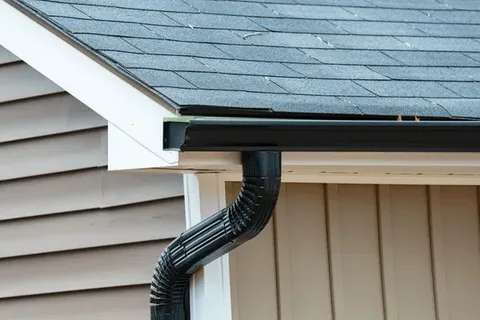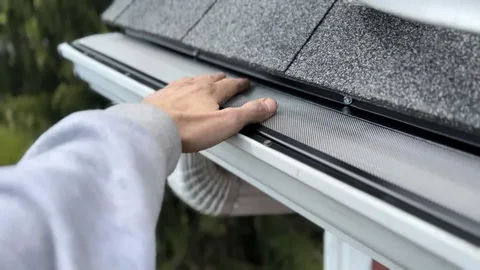]’A well-maintained roof is a homeowner’s first line of defense against the unpredictable GNW3Hforces of nature. However, despite meticulous planning and regular maintenance, unexpected events such as storms, hurricanes, or even falling trees can lead to emergencies requiring prompt roof restoration. In this article, we will explore strategies for effectively weathering the unexpected and ensuring the swift and successful restoration of a damaged roof.
Understanding the Vulnerabilities
Before delving into strategies for emergency roof restoration, it’s essential to understand the vulnerabilities that roofs face during adverse weather conditions. High winds, heavy rainfall, hailstorms, and extreme temperature fluctuations can all contribute to roof damage. Additionally, aging roofs or those with existing structural issues are more susceptible to the impact of these elements. Recognizing these vulnerabilities is the first step in developing a comprehensive plan for emergency roof restoration.
Safe Preventive Measures
While it may not be possible to predict or prevent all emergencies, taking proactive steps to reinforce your roof’s resilience can significantly reduce the risk of extensive damage. Regular roof inspections, timely repairs, and the use of durable materials during construction are fundamental preventive measures.
Regular Inspections:
Regular roof inspections, ideally conducted twice a year, can help identify minor issues before they escalate into major problems. Inspect for loose or missing shingles, damaged flashing, and signs of water damage. Addressing these issues promptly can prevent them from becoming more severe during a weather-related emergency.
Timely Professional Repairs:
When issues are identified during inspections, it’s crucial to address them promptly. Whether it’s replacing a few shingles, fixing damaged flashing, or reinforcing weak spots, timely repairs can enhance the overall resilience of the roof.
Durable Materials:
When constructing or renovating a roof, investing in high-quality and durable materials is essential. This includes sturdy shingles, weather-resistant underlayment, and robust flashing. Quality materials provide a solid foundation for the roof, making it better equipped to withstand unexpected weather events.
Emergency Home Preparedness
Even with preventive measures in place, emergencies can still occur. Having an emergency preparedness plan specifically tailored to address roof damage is crucial for minimizing the impact of unexpected events.
Emergency Contact Information:
Maintain a list of emergency contact information, including local roofing contractors, insurance providers, and relevant authorities. Having this information readily available can expedite the restoration process.
Home Insurance Coverage:
Review your insurance coverage to ensure it adequately addresses potential roof damage. Understand the terms of your policy, including coverage limits, deductibles, and the types of damage that are covered. This knowledge will streamline the claims process in the event of an emergency.
Temporary Repairs:
Equip yourself with basic tools and materials for temporary roof repairs. Tarpaulins, roofing cement, and plywood can be valuable in quickly addressing immediate issues until professional help arrives. Temporary repairs can prevent further damage and protect the interior of your home.
Swift and Safe Response During Emergencies
When faced with an emergency, time is of the essence. Swift and decisive action can make a significant difference in mitigating damage and expediting the restoration process.
Safety First:
Prioritize safety for yourself and others. Avoid attempting risky repairs without the proper equipment and expertise. If the damage is severe or poses a safety risk, evacuate the premises and seek professional assistance.
Professional Assessment:
Contact a professional roofing contractor as soon as possible for a thorough assessment of the damage. Professionals have the expertise to accurately evaluate the extent of the damage and recommend the necessary repairs.
Document the Damage:
Take photographs and detailed notes of the damage for insurance purposes. Documenting the condition of your roof before and after the emergency can strengthen your insurance claim and ensure a smoother process.
Choosing a Qualified Roofing Contractor
Selecting the right roofing contractor is critical for the success of the emergency roof restoration. Consider the following factors when choosing a contractor:
License and Insurance:
Ensure that the contractor is licensed and carries adequate insurance. This protects you from liability in case of accidents during the restoration process.
Experience and Reputation:
Choose a contractor with a proven track record of successfully handling emergency roof repairs. Reading reviews, checking references, and verifying their experience in similar situations can help gauge their reliability.
Availability:
Opt for a contractor who offers emergency services and has the availability to respond promptly. Roof damage can worsen with time, so a contractor who can act swiftly is crucial.
Transparent Communication:
Clear and transparent communication is essential. The contractor should provide a detailed estimate, explain the proposed restoration plan, and keep you informed throughout the process.
Utilizing Advanced Technologies
In the modern era, technology plays a significant role in expediting emergency roof restoration processes and enhancing the overall effectiveness of repairs.
Drones for Inspection:
Drones equipped with high-resolution cameras can be employed for a rapid and detailed inspection of the roof. This technology allows contractors to assess the extent of the damage without physically accessing the roof, especially in situations where safety may be a concern.
Weather Monitoring Systems:
Implementing weather monitoring systems can provide real-time data on changing weather conditions. This information is invaluable for planning and executing emergency restoration efforts efficiently.
Roofing Software:
Roofing software applications can assist contractors in project management, communication, and documentation. These tools streamline the restoration process, ensuring that all aspects are well-coordinated and documented.
Post-Restoration Considerations
Once the emergency roof restoration is complete, there are several important post-restoration considerations to ensure the long-term integrity of your roof and the overall well-being of your home.
- Post-Restoration Inspection: After the emergency restoration, conduct a thorough inspection of the repaired roof. Look for any signs of overlooked damage or issues that may have emerged during the restoration process. Addressing these concerns promptly can prevent them from developing into more significant problems in the future.
- Ongoing Maintenance: Reinforce the importance of ongoing roof maintenance. Regular inspections, even more frequent than before, can help catch potential issues early on. Promptly address any minor damage or wear and tear to prevent them from escalating into more significant problems.
- Review Insurance Coverage: Following the emergency restoration, revisit your insurance coverage. Ensure that any upgrades or improvements made during the restoration process are appropriately reflected in your policy. Maintaining comprehensive insurance coverage is crucial for future protection against unforeseen events.
- Documentation for Future Claims: Keep detailed records of the restoration process, including invoices, receipts, and photographs. This documentation serves as valuable evidence for insurance claims in the future and can expedite the process if you encounter additional issues related to the emergency.
- Consider Upgrades for Enhanced Resilience: If your roof sustained significant damage, consider investing in upgrades that enhance its resilience against future emergencies. This could include impact-resistant shingles, reinforced flashing, or additional weatherproofing measures. Consult with your roofing professional to determine the most effective upgrades for your specific situation.
- Educate Yourself on Warning Signs: Familiarize yourself with the warning signs of potential roof issues. Understanding the early indicators of damage, such as water stains on ceilings, sagging rooflines, or unusual sounds during rain, allows you to address problems promptly before they become emergencies.
- Community Preparedness: Engage with your community on emergency preparedness. Share your experiences and insights with neighbors, emphasizing the importance of regular roof maintenance and emergency planning. A collectively prepared community is better equipped to handle unexpected events.
- Environmental Considerations: Assess the environmental impact of the emergency and restoration efforts. If materials were replaced or discarded during the restoration, ensure that they are disposed of responsibly. Sustainable and environmentally friendly roofing materials can be considered for future repairs or replacements.
- Roofing Warranty: Verify the warranty information for the materials used and the work performed during the emergency restoration. Understanding the terms and duration of your roofing warranty provides peace of mind and can influence future maintenance decisions.
- Homeowner Education Programs: Participate in homeowner education programs offered by local authorities or roofing professionals. These programs can provide valuable insights into maintaining the structural integrity of your home and preparing for emergencies.
Conclusion
Emergency roof restoration is a challenging experience, but with the right strategies and post-restoration considerations, homeowners can emerge from such situations with a more resilient and well-protected property. Proactive maintenance, ongoing inspections, and a commitment to staying informed about roofing technologies and best practices contribute to the long-term health of your roof.
Remember that emergencies can happen unexpectedly, and preparedness is key to minimizing potential damage. By combining preventative measures, a well-thought-out emergency plan, and collaboration with experienced professionals, homeowners can not only weather the unexpected storm but also fortify their homes against future challenges.
Ultimately, a well-maintained and resilient roof is not just a shield against the elements; it’s an investment in the longevity and security of your home. By adopting a comprehensive approach to roof care, you can ensure that your home stands strong, even in the face of the unexpected.




